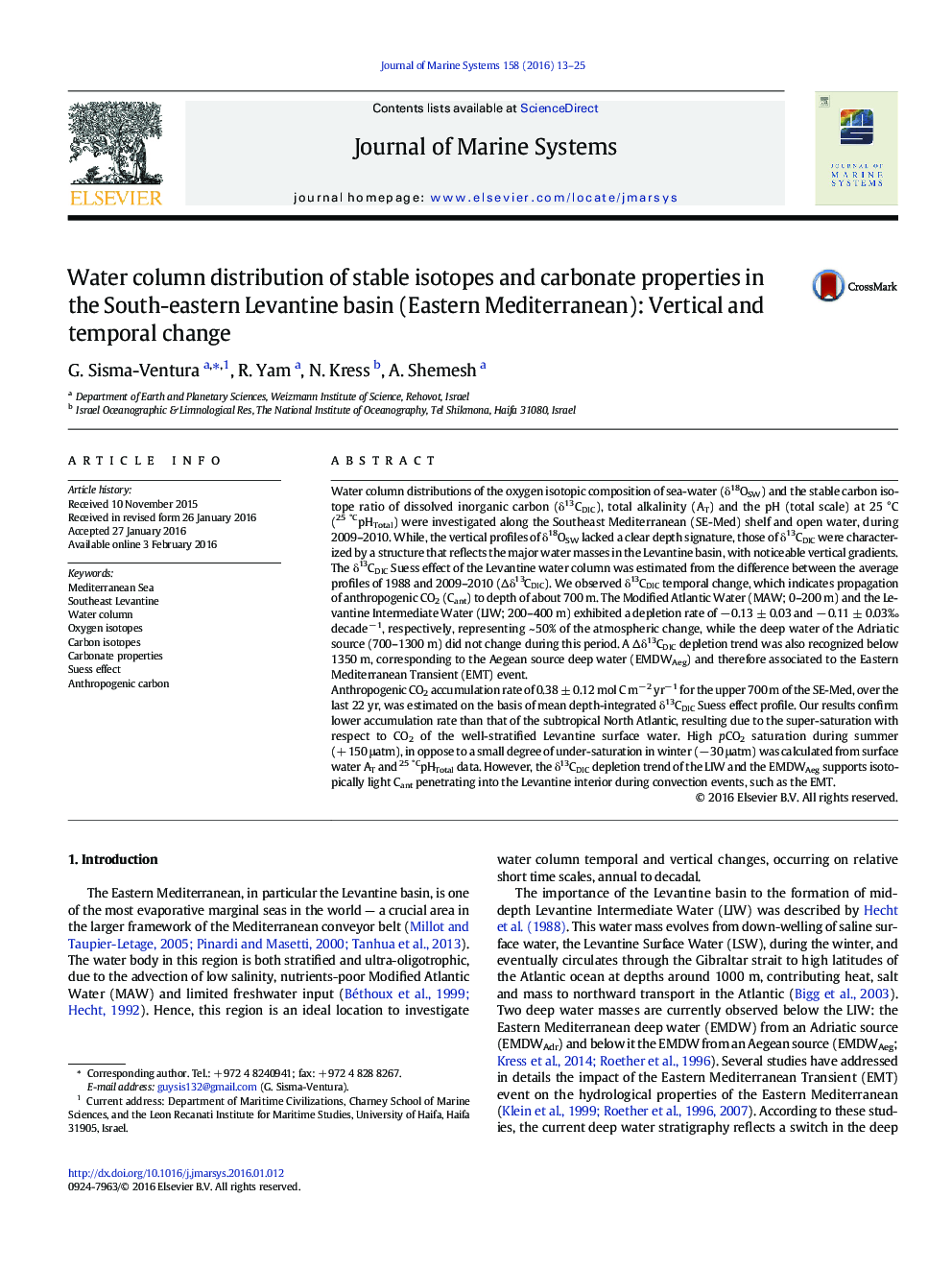| Article ID | Journal | Published Year | Pages | File Type |
|---|---|---|---|---|
| 4547891 | Journal of Marine Systems | 2016 | 13 Pages |
•Water column distribution of stable isotopes and carbonate properties were studied in the Southeast Mediterranean.•We observed δ13CDIC temporal change, propagating to depth of about 700 m.•The estimated anthropogenic CO2 accumulation rate was 0.38 ± 0.12 mol C m− 2 yr− 1.•We illustrate down-welling isotopically light Cant during convection events.
Water column distributions of the oxygen isotopic composition of sea-water (δ18OSW) and the stable carbon isotope ratio of dissolved inorganic carbon (δ13CDIC), total alkalinity (AT) and the pH (total scale) at 25 °C (25 °CpHTotal) were investigated along the Southeast Mediterranean (SE-Med) shelf and open water, during 2009–2010. While, the vertical profiles of δ18OSW lacked a clear depth signature, those of δ13CDIC were characterized by a structure that reflects the major water masses in the Levantine basin, with noticeable vertical gradients.The δ13CDIC Suess effect of the Levantine water column was estimated from the difference between the average profiles of 1988 and 2009–2010 (Δδ13CDIC). We observed δ13CDIC temporal change, which indicates propagation of anthropogenic CO2 (Cant) to depth of about 700 m. The Modified Atlantic Water (MAW; 0–200 m) and the Levantine Intermediate Water (LIW; 200–400 m) exhibited a depletion rate of − 0.13 ± 0.03 and − 0.11 ± 0.03‰ decade− 1, respectively, representing ~ 50% of the atmospheric change, while the deep water of the Adriatic source (700–1300 m) did not change during this period. A Δδ13CDIC depletion trend was also recognized below 1350 m, corresponding to the Aegean source deep water (EMDWAeg) and therefore associated to the Eastern Mediterranean Transient (EMT) event.Anthropogenic CO2 accumulation rate of 0.38 ± 0.12 mol C m− 2 yr− 1 for the upper 700 m of the SE-Med, over the last 22 yr, was estimated on the basis of mean depth-integrated δ13CDIC Suess effect profile. Our results confirm lower accumulation rate than that of the subtropical North Atlantic, resulting due to the super-saturation with respect to CO2 of the well-stratified Levantine surface water. High pCO2 saturation during summer (+ 150 μatm), in oppose to a small degree of under-saturation in winter (− 30 μatm) was calculated from surface water AT and 25 °CpHTotal data. However, the δ13CDIC depletion trend of the LIW and the EMDWAeg supports isotopically light Cant penetrating into the Levantine interior during convection events, such as the EMT.
